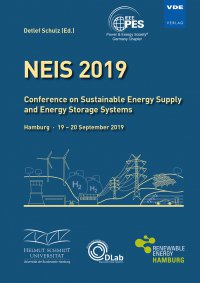Transforming Fluctuating Wind Power to Base Load – How about Power-to-Ammonia?
Konferenz: NEIS 2019 - Conference on Sustainable Energy Supply and Energy Storage Systems
19.09.2019 - 20.09.2019 in Hamburg, Deutschland
Tagungsband: NEIS 2019
Seiten: 6Sprache: EnglischTyp: PDF
Persönliche VDE-Mitglieder erhalten auf diesen Artikel 10% Rabatt
Autoren:
Hoelling, Marc (Hamburg University of Applied Sciences, Hamburg, Germany)
Inhalt:
Due to the phase out of nuclear and coal-fired power plants in Germany, there will be a strong need for base load power generation in the future. If renewable energies are used, the integration of energy storages will be mandatory. The most common approach for long term storage of energy is Power-to-Gas, i.e. the production of hydrogen by electrolysis. Unfortunately, it shows disadvantages in energy density and storage pressures. Therefore, Power-to-Gas is compared to batteries, methanation and a thermal energy storage. Additionally, Power-to-Ammonia is evaluated, in which the energy is stored in the chemical form of ammonia. For the comparison, a 3 MW wind turbine is combined with the different storage types and the overall efficiencies are simulated. The base load power outputs are determined in the range of 320…450 kW and the required storage sizes are about 100 MWh to guarantee full year base load. Thus, an energy storage with a low power output and a high storage size will be most efficient. This task is well fulfilled by Power-to-Ammonia, since it shows a high cost efficiency.


